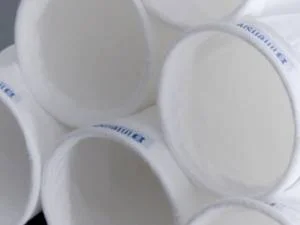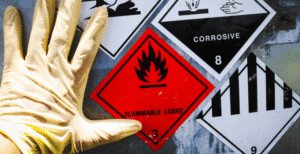What Are Scrubber Systems?
Scrubber systems are tools used to clean the air by removing harmful particles and gases. They help control air pollution. Scrubber systems work by capturing pollutants from exhaust gases before they enter the atmosphere. This keeps the air cleaner and safer for everyone.
There are two main types of scrubber systems: wet scrubbers and dry scrubbers. Each type has different uses in industries.
- Penggosok Basah:
- Wet scrubbers use water or a liquid solution to capture pollutants.
- They are effective for removing gases like sulfur dioxide and hydrogen chloride.
- Wet scrubbers are often used in power plants and chemical factories.
- Penggosok Kering:
- Dry scrubbers use a dry material to capture pollutants.
- They can remove gases like ammonia and some heavy metals.
- Dry scrubbers are common in industries like cement and steel production.
Different industries choose scrubber systems based on the type of pollutants they create. These systems play an important role in protecting the environment and public health.
Working Principles of Scrubber Systems
Scrubber systems help remove pollutants from exhaust gases. They use several methods to clean the air.
- First, scrubbers often use absorption. In this process, gas pollutants pass through a liquid. The liquid absorbs the harmful substances. Think of it like a sponge soaking up water. The liquid then captures the pollutants, making the air cleaner.
- Next is adsorption. This process is different. It uses solid materials to catch pollutants. The gas flows over the solid. The pollutants stick to the surface of the solid. It is similar to how dust sticks to a piece of tape. This method is effective for trapping smaller particles.
- Chemical reactions also play a big role. In some scrubbers, the harmful gases react with special chemicals in the scrubber. This reaction changes the pollutants into safer substances. For example, sulfur dioxide can react with a chemical to form harmless sulfate.
- The scrubber system combines these methods to ensure clean air. The gas enters the scrubber and flows through the different stages. The pollutants get trapped or transformed, and clean air exits the system.
- Visual aids like diagrams or flowcharts can help explain this process better. A simple flowchart could show the path of the gas through the scrubber. It would start with dirty gas entering, then show the absorption, adsorption, and chemical reaction steps. Finally, it would show clean gas leaving the scrubber.
Understanding these principles helps people see how scrubber systems work to protect the environment.
Types of Scrubber Systems
Scrubber systems help reduce air pollution. There are different types of scrubber systems. The main types are wet scrubbers, dry scrubbers, and hybrid systems. Each type has its own design, advantages, disadvantages, and uses.
- Penggosok basah use liquid to remove pollutants. They work by spraying water or other liquids into the air. This liquid captures harmful particles and gases. Wet scrubbers are good for removing gases like sulfur dioxide. They can handle large amounts of air and are useful in industries like power plants. However, they require a lot of water and can create waste.
- Dry scrubbers use a dry material to clean the air. They often use powders or pellets that react with gases. Dry scrubbers do not need water, making them easier to maintain. They work well for removing acid gases. However, they might not be as effective for larger volumes of air. Dry scrubbers are common in industries like cement production.
- Hybrid systems combine both wet and dry scrubbers. They use both water and dry materials to capture pollutants. Hybrid systems can be very effective for different types of gases. They adapt to various situations and can handle different pollutants. However, they can be complex and cost more to install.
Here is a table to compare the types of scrubber systems:
| taip | Design | Kelebihan | Keburukan | Aplikasi yang Sesuai |
| Penggosok Basah | Use liquid to capture pollutants | Effective for large volumes of air | Requires a lot of water | Power plants, chemical industries |
| Penggosok Kering | Use dry materials | Easier to maintain, no water needed | Less effective for large volumes | Cement production, metal processing |
| Hybrid Systems | Combine wet and dry methods | Very effective for various gases | More complex and expensive | Versatile applications |
Each type of scrubber system plays a role in improving air quality. They help industries meet environmental standards and protect health.
Advantages and Disadvantages of Scrubber Systems
Scrubber systems help control air pollution. They clean air by removing harmful particles and gases. Using scrubber systems has both advantages and disadvantages.
One advantage of scrubber systems is their efficiency. They can remove a large amount of pollutants from the air. This helps keep the environment cleaner. Another benefit is that they can be used in different industries. Factories and power plants often use scrubbers to reduce emissions.
Cost is a disadvantage of scrubber systems. They can be expensive to install and operate. Many companies need to spend a lot of money upfront. Maintenance is another concern. Scrubber systems require regular checks and repairs. This can lead to more costs over time.
The environmental impact is also important. While scrubbers help reduce pollution, they can create waste. Some scrubbers produce sludge or other byproducts. This waste needs to be handled properly to avoid harming the environment.
In summary, scrubber systems offer effective air pollution control but come with costs and maintenance needs.
Applications of Scrubber Systems in Various Industries
Scrubber systems play a big role in different industries. Power plants are one of the main users of scrubber systems. These plants burn fossil fuels to generate electricity. They produce harmful gases like sulfur dioxide. Scrubber systems help remove these gases before they can enter the air. This makes the air cleaner and safer for everyone.
Chemical manufacturing also uses scrubber systems. In this industry, many chemicals are made that can produce toxic gases. Scrubber systems capture these gases and clean them. This protects workers and the environment. For example, a chemical plant may use a scrubber to remove chlorine gas. This helps keep the air free from harmful substances.
Maritime operations are another area where scrubber systems are important. Ships use heavy fuel oil that can create pollution. Scrubber systems on ships treat the exhaust gases. They reduce the sulfur content, making the emissions less harmful. Many shipping companies now use scrubbers to follow environmental laws. This shows their commitment to cleaner oceans and air.
Scrubber systems have many applications in various industries. They help reduce pollution and protect health. In power plants, chemical manufacturing, and maritime operations, scrubber systems are essential for safer environments.
Maintenance and Inspection of Scrubber Systems
Maintenance and inspection of scrubber systems are very important. These systems help clean pollutants from exhaust gases. To keep scrubber systems working well, regular checks are necessary. Here is a list of steps to follow for maintenance and common issues to look out for.
Maintenance Procedures:
- Daily Checks:
- Check fluid levels.
- Inspect for leaks in pipes and tanks.
- Ensure all gauges are working.
- Weekly Checks:
- Inspect scrubber media for wear.
- Clean filters to prevent clogging.
- Test the pH of the scrubbing liquid.
- Monthly Checks:
- Review the overall system for any signs of damage.
- Check the power supply and electrical components.
- Look for unusual noises during operation.
- Yearly Inspections:
- Schedule a professional inspection.
- Replace any worn-out parts.
- Review operating efficiency reports.
Common Issues:
- Low Efficiency:
- Check for blockages in the scrubber media.
- Ensure the scrubbing liquid is at the correct level.
- Leaks:
- Inspect joints and connections for damage.
- Tighten any loose fittings.
- Unusual Noises:
- Look for loose parts or debris in the system.
- Check the motor and fans for issues.
- High Pressure Drop:
- Clean or replace clogged filters.
- Inspect ductwork for obstructions.
These steps help keep scrubber systems running smoothly. Regular maintenance can prevent bigger problems and ensure cleaner air.
Innovations in Scrubber Technology
Innovations in scrubber technology are making a big difference in how we clean air and water. These advancements help reduce pollution and make the world a healthier place. Here are some key innovations in scrubber technology:
- Improved Materials: New materials make scrubbers stronger and last longer. They can handle more heat and pressure, which helps them work better.
- Kecekapan Tenaga: Recent designs use less energy. This means scrubbers can clean air and water while saving power. This is good for the environment and reduces costs.
- Integration with Other Systems: Scrubbers now work better with other pollution control systems. They can be part of a larger system that cleans air and water together. This makes the process more effective.
- Advanced Monitoring: New technology allows for real-time monitoring of scrubber performance. Operators can check how well the scrubbers work and make quick changes if needed.
- Compact Designs: New scrubbers take up less space. This makes it easier to install them in different locations without needing a lot of room.
These innovations in scrubber technology help reduce pollution and make industries cleaner and more efficient.
Choosing the Right Scrubber System for Your Needs
Choosing the right scrubber system for your needs is important. A scrubber system helps clean air or water by removing pollutants. Different systems work better for different types of pollutants. Here are some factors to consider when selecting a scrubber system.
First, identify the type of pollutant you need to remove. Some scrubbers work well for gases, while others are better for liquids. For example, if you are dealing with sulfur dioxide, a wet scrubber might be the best choice.
Next, think about the emission levels you need to meet. Different scrubber systems can handle different amounts of pollutants. If your emissions are high, you may need a more powerful scrubber. Check the specifications of each system to find out how much pollution it can handle.
Regulatory requirements also matter. Many areas have laws about how much pollution can be released. Make sure the scrubber you choose meets these rules. This helps avoid fines and keeps the environment safe.
To make the decision easier, consider a flowchart. Start with the type of pollutant, then check the emission levels, and finally look at the regulations. Each step will guide you to the right scrubber system for your needs.
In summary, choosing the right scrubber system involves knowing the type of pollutant, understanding emission levels, and following regulatory requirements. By using these guidelines, you can select a system that works best for you.
Kesimpulan
Scrubber systems play a vital role in air pollution control. They help clean the air by removing harmful particles and gases. This process is important for protecting the environment and people’s health. Scrubber systems can reduce emissions from factories and power plants. They help ensure that the air remains clean and safe to breathe.
When considering scrubber systems, it is essential to think about their benefits. They can improve air quality and meet government regulations. Implementing scrubber systems can also lead to a healthier community.
Readers should keep this information in mind when evaluating scrubber systems. Understanding their importance can help in making better choices for air pollution control. Everyone can contribute to a cleaner environment by supporting the use of scrubber systems.



